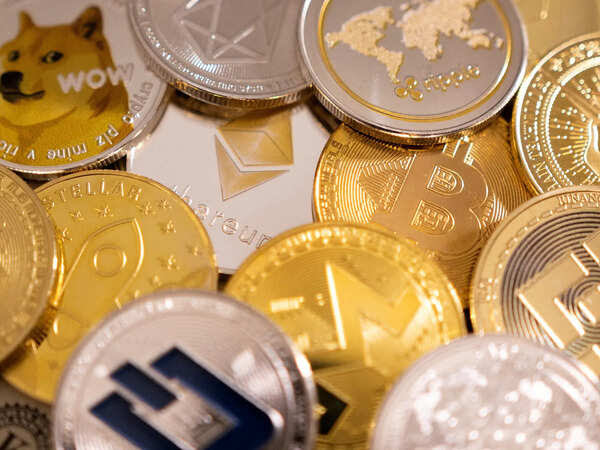In an era defined by financial uncertainty and digital transformation, investors face a crucial choice between traditional safe havens like gold and disruptive assets like cryptocurrency. Both investment avenues offer unique advantages—gold with its timeless stability and intrinsic value, and cryptocurrency with its innovation, high returns, and decentralization. Yet, each carries distinct risks shaped by global markets, regulation, and technology. As inflation pressures mount and digital finance evolves, the debate intensifies over which asset delivers superior long-term value. This article examines both sides in depth, offering a balanced perspective for investors navigating today’s complex financial landscape.
1. The Historical Reliability of Gold
Gold has been the cornerstone of wealth preservation for centuries. Its enduring value stems from limited supply, universal acceptance, and resistance to inflation. In times of economic instability, investors traditionally turn to gold as a safe haven. It acts as a hedge against currency depreciation, geopolitical tension, and market volatility.
Unlike paper assets, gold holds intrinsic value—its worth is not reliant on digital systems or centralized authorities. Central banks continue to hold substantial reserves in gold, reflecting trust in its long-term stability. For conservative investors, gold represents reliability and physical security in an increasingly digital economy.
2. The Digital Promise of Cryptocurrency
Cryptocurrency, particularly Bitcoin, has emerged as the new-age alternative to traditional stores of value. Built on blockchain technology, cryptocurrencies operate independently of central banks and intermediaries. This decentralization appeals to investors seeking autonomy, transparency, and protection from government manipulation.
Bitcoin’s finite supply of 21 million coins creates scarcity similar to gold, while other cryptocurrencies like Ethereum provide utility through smart contracts and decentralized finance (DeFi) platforms. The potential for exponential returns has attracted both retail and institutional investors, transforming cryptocurrency from a niche experiment into a legitimate financial asset class.
3. Risk and Volatility: The Core Difference
While both gold and cryptocurrency serve as investment hedges, their risk profiles differ sharply. Gold prices move gradually, reflecting macroeconomic factors and long-term demand. In contrast, cryptocurrency markets experience extreme volatility—prices can surge or plummet within hours.
Regulatory uncertainty, technological vulnerabilities, and speculative trading amplify this volatility. Investors must therefore balance ambition with caution. Although gold’s growth is steady, crypto’s rapid price movements can yield higher short-term profits—but also significant losses. Diversification between both assets may help mitigate portfolio risks.
4. Liquidity, Accessibility, and Transparency
Gold, despite being globally recognized, can be cumbersome in terms of storage and transfer. Physical gold requires secure vaults, while gold ETFs and digital gold provide partial convenience. Cryptocurrency, however, offers instant global transactions with minimal barriers.
Blockchain technology ensures transparency and traceability, allowing investors to monitor holdings in real time. Additionally, digital wallets and exchanges have made cryptocurrency highly accessible to the average investor. However, cyber theft, wallet loss, and exchange fraud remain persistent concerns, underscoring the importance of secure investment practices.
5. Inflation Protection and Portfolio Performance
Both gold and cryptocurrency are viewed as hedges against inflation—but they function differently. Gold maintains purchasing power through intrinsic value, while Bitcoin and other digital currencies protect against fiat currency erosion through decentralization and limited supply.
Historical data shows that gold performs well during inflationary periods, whereas cryptocurrency often thrives in times of liquidity and technological optimism. Investors seeking balance might consider allocating portions of their portfolio to both—using gold for stability and cryptocurrency for growth potential.
6. Future Outlook: Convergence or Competition?
The future of investment may not be a choice between gold and cryptocurrency, but rather a blend of both. With increasing digital adoption, tokenized gold—digital assets backed by physical gold reserves—is bridging the gap between traditional and modern finance.
As global economies digitize, governments and institutions are gradually integrating cryptocurrencies into their strategies. Simultaneously, gold’s irreplaceable value continues to underpin monetary systems. The convergence of these assets could reshape portfolio management, combining trust, technology, and tangibility in a new financial order.
Conclusion: Balancing Tradition and Innovation
The debate between cryptocurrency and gold reflects more than just investment preference—it mirrors the evolution of money itself. Gold embodies legacy, security, and physical assurance; cryptocurrency represents innovation, independence, and limitless potential.
For prudent investors, the answer may not lie in choosing one over the other, but in harmonizing both to build a resilient and adaptive portfolio. As financial systems evolve, those who balance the permanence of gold with the promise of digital assets may be best positioned to thrive in the future economy.
